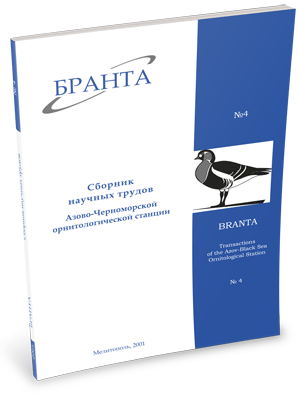
Transactions
of the Azov-Black Sea Ornithological Station



An unusual nesting of Demoiselle Crane.
Andryuschenko Y.A., Oleynik D.S.
Demoiselle Crane (Anthropoicles virgo) is an indigenous inhabitant of Ukrainian steppe. At present the species uses mostly fields and pastures for nesting. But in some cases it inhabits the biotopes which are not characteristic for the species biology. An example of such a nesting is given below.
On April 2000 in the Crimea a nest of Demoiselle Crane was found in the center of a small lake among sedge growth (Carex sp.). The lake parameters were 50x80 m, the depth was from 10 - 12 cm. The height of the sedge above the water was 30 -53 cm.
The nest was situated on the tussock of the sedge and consisted of dry caulises and roots of Limonium sp., Carex sp. and other grasses. Its diameter was 48 cm, height was 4 cm. The nest looked like that of the Common Crane (Grus grus), but was of smaller diameter and height.
As Common Crane (Winter, et.al., 1994) Demoiselle Cranes were building the nest as soon as it was settling, throwing additive building material on the top.
There were two eggs in the nest. On these grounds Demoiselle Crane can be suggested to be a quite plastic species that gives it an opportunity to live in cardinal changing condition of its indigenous areas. Besides, its nesting on the water bodies also confirms an ecologically coastal origin of this species as a typical representative of Gruidae family.
Read the paper in a PDF file